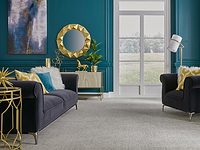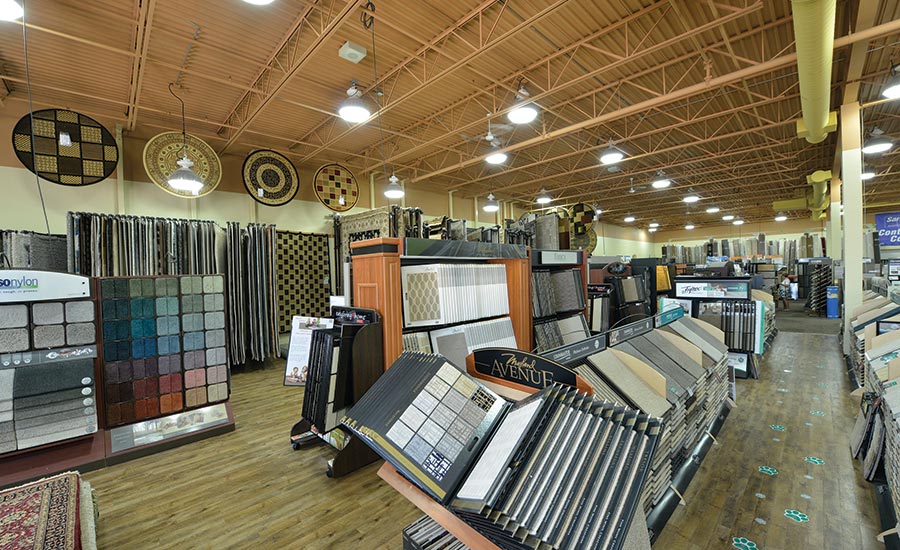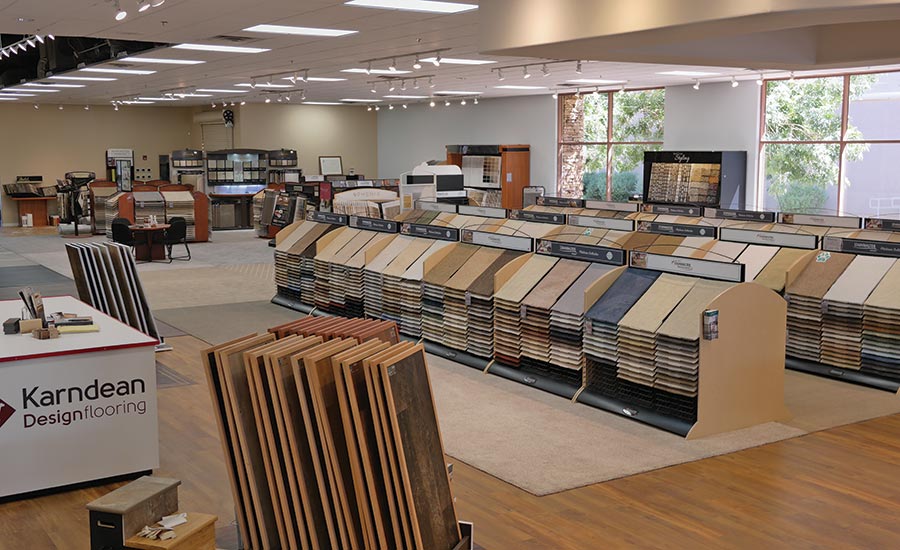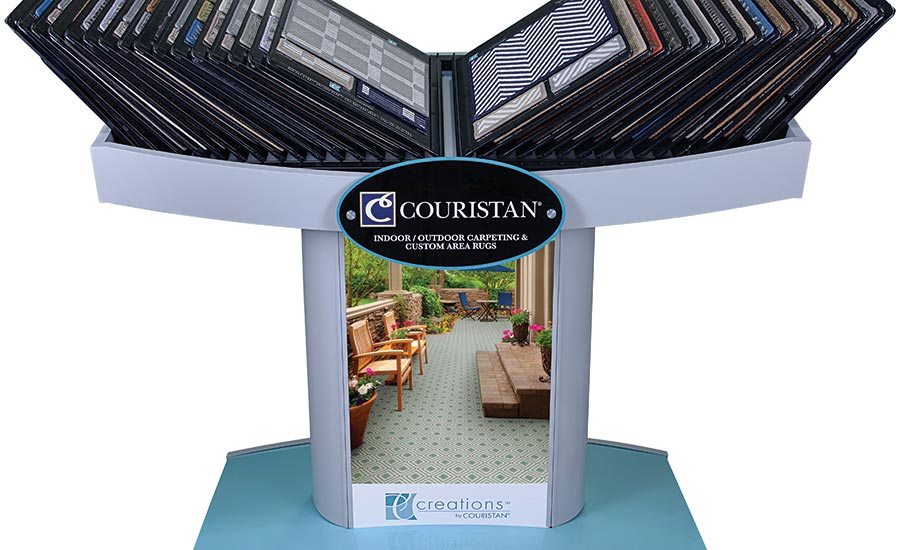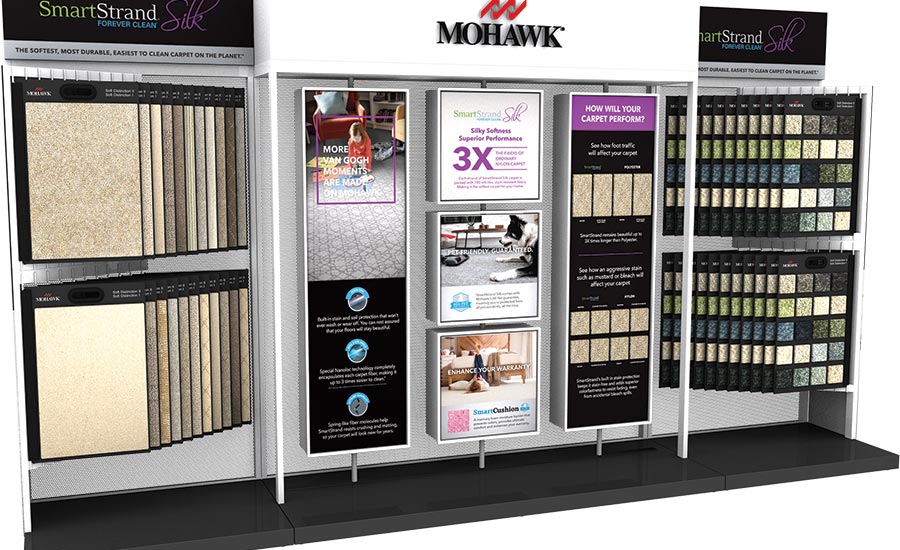The Soft Sell: Carpet at Retail

With showrooms in Ontario, Canada, Sarmazian Brothers Flooring is a family owned and operated retail business. They have reported a steady increase in sales of area rugs and carpet.

Baker Bros. Area Rugs and Flooring, is a retailer with seven locations in Arizona. “I think that carpet is going to end up being the most fashionable product,” president Phil Koufidakis said.

Couristan’s pedestal display allows a consumer to easily view a range of indoor/outdoor carpets and rugs, designed to take up less space on the retail floor.

Mohawk’s SmartStrand Silk destination display effectively tells the carpet story, with signage, color, and swatches grouped together to catch a customer’s attention.




As hard surface continues to gain market share, and flooring professionals are faced with a challenging retail landscape, those in the carpet sector have had to adapt quickly to keep sales figures strong. Yet even with the pandemic and changing tastes, carpet remains the choice for consumers looking to bring color, pattern, and texture into select areas of the home.
“Our way of living has changed, and that has changed the sale proposition of carpet,” said Phil Koufidakis, president of Baker Bros. Area Rugs and Flooring, a retailer with seven locations in Arizona.
Indeed, though the preference for hardwood is clear, there’s a renewed interest in carpet, especially during the pandemic. People are spending more time at home, and they are finally ready to update their carpeting—sometimes after a decade or more with the same flooring.
“We’re doing very well with carpet. During the summer, people weren’t traveling, and they have been renovating more than they were last year,” noted Levon Sarmazian, manager of the Sarmazian Brothers Flooring showroom in Guelph, Ontario, Canada.
With people working from home in greater numbers, carpet has added appeal for its comfort factor. “More people are going to continue to work out of their homes, and they are going to want to spend money on their home offices. The one thing that carpet has that hard surface never will is comfort and warmth,” said Jamie Welborn, Mohawk’s vice president of product management, soft surface.
The one thing that carpet has that hard surface never will is comfort and warmth.
– Jamie Welborn
Carpet may be taking up less square footage, but it is making a big impact. It is being used to decorate certain rooms, and as a complement to hardwood. “We’re seeing carpet mostly for runners on stairs, and in basements,” Sarmazian said.
He added that area rugs are especially popular with customers who want the look of carpet without having it installed throughout an entire space. While they offer a vast selection of premade rugs from their suppliers, their custom business is thriving. “We’re doing a lot more custom area rugs now compared to broadloom.”
Custom work is also one of the fastest growing segments for Couristan. “We all know that hard surfaces have come on quite strong, but there’s a need for soft floor coverings on top of those hard surfaces. So, when we’re developing a piece of broadloom, we’re thinking about what it is going to look like as an area rug,” explained Len Andolino, executive vice president, residential division, Couristan.
Consumers are willing to play with color and pattern because they don’t have to commit to wall-to-wall carpeting. “For years it was basically a beige world. Now we’re definitely introducing and selling more colors. I am talking about the reds, the blues, the real accent colors. People like the vibrancy,” noted Welborn.
Andolino said every shade of blue is popular with the Couristan customer. “For a decade, it seemed like the industry went beige and gray. In 2018, we made a commitment to color. And now, two years later, color is leading the way for us. It’s remarkable how strong blue has become.”
Designers and retailers are also embracing patterns, as people continue to request more fashion-forward styles. “Comfort is key, so textures will flourish both in weight and pile height. Expect exciting and highly creative pattern development, as it will benefit from a push for new sources of inspiration driven by curiosity and an abundance of time,” said Maeriel Mumpar, product designer at Anderson Tuftex.
Koufidakis noted that he is seeing an increase in sales of patterned carpet, and he expects the trend to continue. “A much greater percentage of people are buying patterned products today. I would say ten years ago, at the high, watermark carpet was about 20% of the business. Now it’s probably three times that.”
Displays showcase the newest carpet, and also convey information about a company or a particular product. Clear signage, color, and samples are combined to create visual and tactile appeal that motivates shoppers to make a purchase. Welborn said that because space is at a premium—with hardwood taking up more and more of the sales floor—displays have to be efficiently designed.
“Not only has carpet lost space at home, it has also lost space in the retail store. Displays are big investments for our dealers, and we don’t want them to have to change them out every year. What we try to do is not only incorporate product into the display, but also tell a story.” Mumpar added that organization rather than an overabundance of product can be most effective. “We simplify the searching and buying experience by organizing styles within particular categories,” she said.
Industry professionals agree that samples are vital, especially when selling carpet. Welborn explained that people often overlook lighting as a factor when selecting flooring. “We’ve gone through a change in lighting, with the LED lights versus the old fluorescents. Nothing replaces a sample because you never know how the color is going to flare, and the lighting in your home is so different compared to what you see at the dealer.”
Sarmazian said that they allow clients to borrow samples from the display racks for a few days before they make a final decision. “We’re very big on sampling. We encourage our customers to take the samples home and look at them in the daylight, and look at them at night. It’s surprising how much lighting can really change the appearance of carpet.”
Although carpet sales have waned in recent years, perception is shifting, with customers looking at carpet not as a utilitarian flooring but as a higher-end product for the home. “The whole face of carpet has, and will continue, to change for the consumer. I think that carpet is going to end up being the most fashionable product,” Koufidakis said.
Looking for a reprint of this article?
From high-res PDFs to custom plaques, order your copy today!




